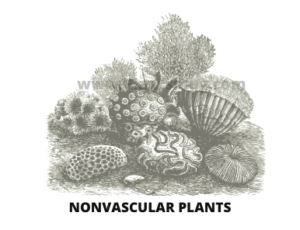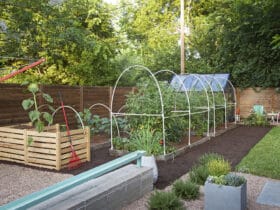Are you interested to know about nonvascular plants, what is the characteristic, types, and vegetation of nonvascular plants? Why these plants are important and how they benefit our environment.
Nonvascular plants are also known as bryophytes are without a vascular tissue system which consists of phloem and xylem and responsible for the internal transport of minerals and water.
Nonvascular plants or bryophytes also called the amphibians of plants kingdom because of their need for moist surroundings and they are found around 450 million years ago.
There are more than 20,000 plant species are found on earth and they mainly categorize in 3 types- mosses, liverworts, and hornworts.
These plants sometimes called “lower Plants”. They have a lack of roots, stem, and leaves. They reproduce by via spores rather than seeds. They are unable to produce flowers, fruits, and wood.
They are basically small plants they have a lack of maturity in comparison to vascular plants and limited in size by poor transport methods for water gases and other components.
Nonvascular plants have the absence of vascular system so they developed specialized tissue that helps them for water and other components transportation.
Also Read: How to Care for Exotic Angel Plants With Best 5+ Tips
Characteristic of Nonvascular plants:
1. These plants have an absence of a vascular system.
2.They are small in size and they also the absence of roots, flowers, and fruits.
3. They are dependent on water for there sperm fertilization process and they reproduce by spores.
4. The principal generation of the nonvascular plants has Gametophyte.
5. Gametophyte is haploid in size and they contain only one set of chromosomes per cell.
6. Without water no fertilization happens, water is compulsory.
7. These plants have the least specified tissue and absence of lignified xylem.
8. They have an absence of stomata and they are unable to resist water loss or gas exchange.
9. For absorption they totally depend on diffusion and osmosis.
10. These plants require moisture entire their life cycle.
10. Bryophytes, mosses, and green algae are the example of bryophytes.
Also Read: Differentiate Between Warm And Cool Season Crops (Best 9 Points)
Examples of nonvascular plants:
1. Mosses:
These are the most abundant types of nonvascular plants or bryophytes. These are small met like vegetation structure mostly grow on rocks, wet dump areas, trees, and glaciers.
2. Liverworts:
They look like mosses but lobed, a leaf-like structure, packed in larger mat or bundle like structure and they prefer to grow dim light and damp soil.
3. Hornworts:
These have a leaf-like body with a long horn-like structure, that extended from the plant body.
4. Algae:
Not every algae come in this category very few are comes in the category of nonvascular plants. Example Viridiplantae.
Ecological Benefits of Nonvascular Plants:
1. These plants prevent soil erosion because of there absorptive qualities.
2. They help others are plants to grow up their seeds by providing the moisture to the seeds.
3.They play a role as a keystone species in the environment.
Also Read: How Do Aquatic Plants Perform Photosynthesis With Best 4 Points











